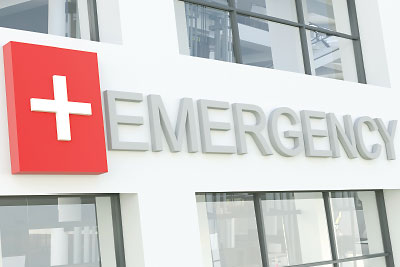Number of Children’s Mental Health ED Visits Climb
Abstract
Over a 10-year period, pediatric visits to emergency departments for all mental health disorders rose 60%, and visits related to deliberate self-harm increased by more than 300%.

The percentage of children presenting to emergency departments (EDs) with mental illness and substance use disorders rose dramatically between 2007 and 2016, with visits related to deliberate self-harm increasing by more than 300%, according to a report in Pediatrics.
“We observed that children were presenting at EDs in all locations with all pediatric volumes, whether they were specialized or not,” said lead author Charmaine Lo, Ph.D., M.P.H., senior research scientist at Children’s National Hospital, in a video presentation about the study that accompanied the report. “In fact, most visits were to nonspecialized, nonchildren hospital EDs.”
Lo and colleagues analyzed data from the 2007 to 2016 Nationwide Emergency Department Sample, Healthcare Cost and Utilization Project, and Agency for Healthcare Research and Quality.
They looked at visits for children aged 5 to 17 years who presented with mental disorders, substance use disorders, and/or deliberate self-harm. They also looked at visits according to geographic location of the hospital, the volume of children regularly seen at the hospital, and whether the hospital was a specialized children’s hospital.
The authors found that over the 10-year study period, the total number of pediatric ED visits was stable, but pediatric ED visits for all mental health disorders rose 60%, and visits related to substance use disorder rose 159%. ED visits for deliberate self-harm increased by 329% during this time.
“The majority of these visits occur at nonchildren’s EDs in both metropolitan and nonurban settings, which have been shown to be less prepared to provide higher-level pediatric emergency care,” Lo and colleagues wrote. “It will be important to focus future mental health preparedness efforts and resources on all hospital EDs, particularly smaller-volume and rural EDs, and not just on children’s hospital EDs.”
Vera Feuer, M.D., director of the pediatric emergency psychiatry service at Northwell Health, Cohen Children’s Medical Center, said the number of children seen at Northwell jumped from 2,200 per year in 2012, when she became director, to more than 3,200 in 2015. Because of this increase, in 2017 Northwell opened a psychiatric urgent care center that helped to bring the numbers down by allowing children and teenagers with less severe symptoms to be seen outside of the ED. But the total numbers of pediatric patients—coming to urgent care and the ED—continues to rise, she said. Last year, this number reached 5,000.
Resources Aid Hospital Readiness
The Emergency Child Psychiatry Committee of the American Academy of Child and Adolescent Psychiatry (AACAP) is collaborating with the American Academy of Pediatrics (AAP) to develop mental health quality metrics that can be included in the 2021 Pediatric Readiness Survey—a component of the Pediatric Readiness Project. This project is a multiphase quality improvement initiative of the federal Emergency Medical Services for Children Program, the American College of Emergency Physicians, the Emergency Nurses Association, and AAP. It is designed to ensure that U.S. emergency departments have guidelines and resources in place to provide effective emergency care to children.
Vera Feuer, M.D., chair of the AACAP committee, also drew attention to “Critical Crossroads: Pediatric Mental Health Care in the Emergency Department,” a toolkit for rural hospitals produced by the Health Resources and Services Administration (HRSA). The AACAP committee worked with the HRSA and several other federal agencies to develop the toolkit.
Information about the Pediatric Readiness Project is posted here.
Information about “Critical Crossroads” is posted here.
Feuer emphasized that the increasing pediatric visits to the ED described in the Pediatrics report were happening “across the board”—at rural and nonspecialty hospitals as well as children’s hospitals and academic medical centers. “Some rural hospitals may have telepsychiatry, but you aren’t going to have an assessment by a child psychiatrist and more likely the assessment will be done by whoever is attending in the emergency department. The quality of assessments varies very widely.”
As a result, some of these hospitals may, out of an abundance of caution, admit children and teenagers to the hospital who may not really need inpatient care, she noted. At the pediatric emergency psychiatry service at Northwell, the admission rate is 18%; at some general hospitals, the admission rate is as high as 60%, she said.
Related to this is the problem of excessive boarding of minors, some of whom are boarded for days. Feuer, who is co-chair of the Emergency Child Psychiatry Committee of the American Academy of Child and Adolescent Psychiatry, said the committee is developing guidelines for boarded pediatric patients. She drew attention to other resources developed by federal agencies and medical organizations to help hospitals prepare for pediatric mental health emergencies (see box on page 15).
The COVID-19 pandemic has led to changes in ED trends: it initially caused a steep drop in overall visits, but the children and teenagers who were coming to the ED were much more acutely sick.
Speaking with Psychiatric News in early July, Feuer said ED visits were starting to rise again. If and when students return to school, ED visits are likely to rise still more; Feuer said schools are most frequently the source of a referral to the emergency department.
The overriding cause of increasing pediatric ED visits is lack of access to mental health care in the community. “The crux of the issue is access and reimbursement,” Feuer said. “Until we give people an alternative where they can get kids assessed in a timely manner in the community without having to wait months on a waiting list, we are going to continue to manage these kids in the emergency department.” ■
“Children’s Mental Health Emergency Department Visits, 2007-2017” is posted here.



